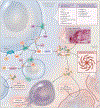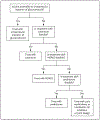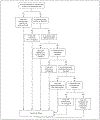Calcium Pyrophosphate Deposition Disease
- PMID: 27355536
- PMCID: PMC6240444
- DOI: 10.1056/NEJMra1511117
Calcium Pyrophosphate Deposition Disease
Conflict of interest statement
No potential conflict of interest relevant to this article was reported.
Figures





References
-
- McCarty D Jr, Kohn NN, Faires JS. The significance of calcium pyrophosphate crystals in the synovial fluid of arthritic patients: the “pseudogut syndrome.” 1. Clinical aspects. Ann Intern Med 1962; 56: 711–37. - PubMed
-
- Zhang W, Doherty M, Bardin T, et al. European League Against Rheumatism recommendations for calcium pyrophosphate deposition. I. terminology and diagnosis. Ann Rheum Dis 2011; 70: 563–70. - PubMed
-
- Masuda I, Ishikawa K. Clinical features of pseudogout attack: a survey of 50 cases. Clin Orthop Relat Res 1988; 229: 173–81. - PubMed
-
- McCarty D Jr. Diagnostic mimicry in arthritis: patterns of joint involvement associated with calcium pyrophosphate dihydrate crystal deposits. Bull Rheum Dis 1975; 25: 804–9.
Publication types
MeSH terms
Substances
Grants and funding
LinkOut - more resources
Full Text Sources
Other Literature Sources
